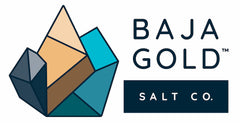Industry Leading Mineral and Trace Element Nutrition
Baja Gold’s unique harvesting techniques and geological source result in the world’s most mineral-rich, naturally low sodium sea salt. By switching from table salt, refined sea salt, or even earth ‘sea’ salt you’ll reduce your sodium intake and increase your valuable mineral and trace element nutrient intake. Plus, your culinary creations will explode with flavors beyond just the bitter taste of sodium chloride. That’s what makes Baja Gold the healthiest, most flavorful sea salt in the world.
How do we know? We complete third-party laboratory testing of Baja Gold on a regular basis to ensure we maintain a consistent range of sodium and mineral levels. More on those below.
Our competitors often publish their own analyses and specification sheets, providing insight into their sodium and mineral levels. That is a great starting point to separate true mineral sea salts from ‘refined’ sea salts.
To make sure Baja Gold remains the leading unrefined mineral sea salt, we also periodically test competitive sea salts through third-party laboratories. Most of the time these tests validate their posted specifications. In some cases, they do show differences - both above and below posted specifications.
Importantly, we’ve yet to find or test a sea salt with a lower natural sodium level or higher macro and trace mineral levels than Baja Gold. Read on to explore these in more detail.
Let's Talk About 'Salt'
‘Salt’ typically refers to Sodium Chloride, although the key element measured for nutritional content and laboratory analyses is actually ‘Sodium.’
Baja Gold offers the lowest natural Sodium levels, typically ranging from 29.5% - 31.5%. Standard table salts and refined sea salts are often as high as 38% - 39%. Earth salts are typically 36 - 38% Sodium. And lastly, leading ‘Gray’ unrefined sea salts are 33.5 - 35.5% Sodium. You can confirm these values yourself by reviewing Nutritional Facts or posted Specification Sheets.
For quick reference, ‘Salt’ is calculated by multiplying Sodium by 2.54 to achieve Sodium Chloride. For more information on Sodium and Sodium Chloride, please visit here: Sodium and Salt. Those values are also shown below.


